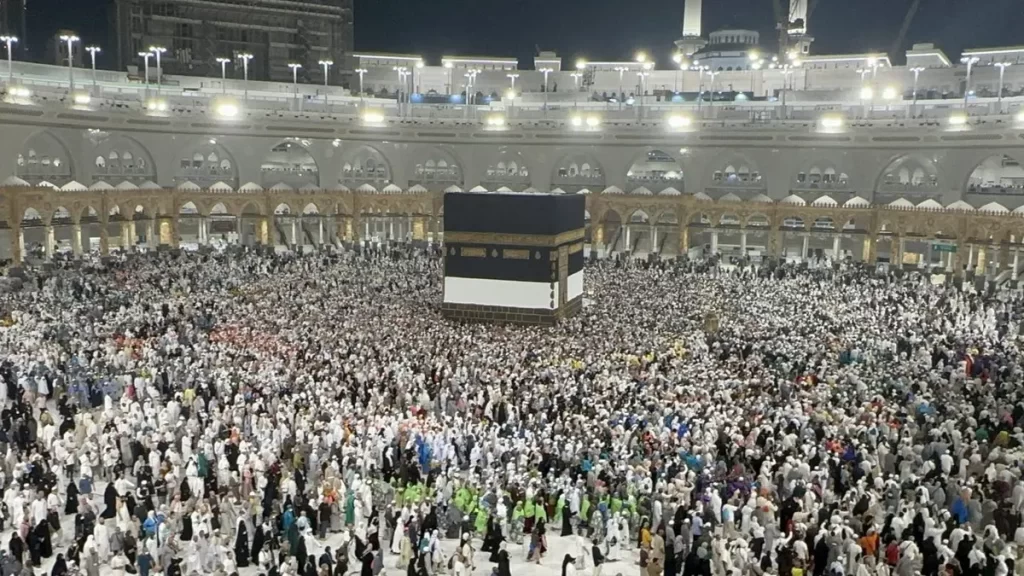The 2024 Hajj pilgrimage in Saudi Arabia has been marked by tragedy, with officials reporting over 1,000 deaths among the faithful. Extreme high temperatures at Islamic holy sites in the desert kingdom contributed significantly to the fatalities, with more than half of the deceased hailing from Egypt.

While the Egyptian government officially announced only 31 authorized pilgrim deaths due to chronic diseases, unofficial reports paint a grimmer picture. A Cabinet official, speaking anonymously, revealed that at least 630 other Egyptians perished during the pilgrimage, with most deaths reported at the Emergency Complex in Mecca’s Al-Muaisem neighborhood. An Egyptian diplomat confirmed this tally, adding that most of the deceased have been buried in Saudi Arabia.
Saudi authorities attempted to crack down on unauthorized pilgrims, expelling tens of thousands. However, many, primarily Egyptians, still managed to reach holy sites in and around Mecca, some even on foot. Unlike authorized pilgrims with access to hotels, these individuals had no refuge from the scorching heat. In response to the crisis, Egypt revoked the licenses of 16 travel agencies accused of facilitating unauthorized pilgrimages. These agencies allegedly failed to provide adequate services and illegally enabled travel to Mecca using inappropriate visas.

The tragedy wasn’t limited to Egyptian pilgrims. The Associated Press reported fatalities among pilgrims from various countries, including 165 from Indonesia, 98 from India, and dozens more from Jordan, Tunisia, Morocco, Algeria, and Malaysia. Two U.S. pilgrims were also reported dead.
During this year’s Hajj, daily high temperatures in Mecca and surrounding sacred sites ranged between 46°C (117°F) and 49°C (120°F). Journalists observed pilgrims fainting, vomiting, and collapsing due to the extreme heat, particularly on the second and third days of the pilgrimage.
While deaths during the Hajj are not uncommon, this year’s toll was unusually high. It surpassed recent tragedies such as the 2015 stampede in Mina that killed over 2,400 pilgrims and a crane collapse at Mecca’s Grand Mosque the same year that claimed 111 lives.

The Hajj, one of the five pillars of Islam, is one of the world’s largest religious gatherings. In 2024, more than 1.83 million Muslims performed the Hajj, including over 1.6 million from 22 countries and around 222,000 Saudi citizens and residents.
As the Muslim world grapples with this tragedy, questions arise about pilgrim safety and the measures needed to protect the faithful during future Hajj seasons, particularly in the face of extreme weather conditions. The high number of fatalities among unauthorized pilgrims also highlights the risks associated with attempting to perform the Hajj without proper arrangements and support.

Saudi Arabia has not officially commented on the deaths during the pilgrimage, which is required of every able Muslim once in their life. However, the scale of this year’s tragedy may prompt calls for increased transparency and improved safety measures in future Hajj seasons.
The international community will likely be watching closely as more details emerge about the circumstances surrounding these deaths. The incident may also spark discussions about how to balance the spiritual importance of the Hajj with the practical challenges of managing such a massive gathering in extreme climate conditions.
As families mourn their loved ones and survivors reflect on their experiences, the 2024 Hajj will be remembered as a pilgrimage marked by both devotion and devastating loss. The lessons learned from this tragedy may shape the future of one of Islam’s most sacred rituals for years to come.
AP



